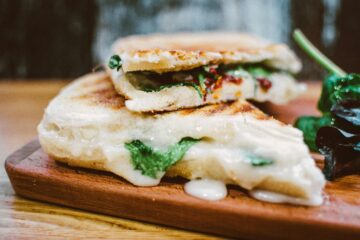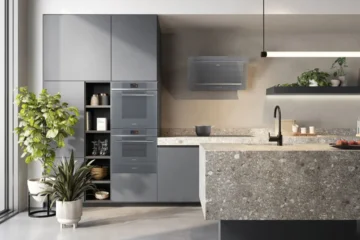Have you ever found yourself not knowing which pot or pan to use when cooking?
There are many different types of cooking pots and pans available for your kitchen. Each can help you perfect your cooking when used correctly, but it is easy to mistake which is the best to use for each dish.
Firstly, its important to understand the difference between a pot and a pan. A pot is a tall edged dish often with two loop handles. Whereas a pan is shallower and has one handle. Commonly, a pot is used to undertake cooking methods which involve fully covering the ingredients, such as boiling or simmering. However, a pan is used to apply high heat in methods such as frying or sauteing.
To help you understand the best pot or pan to use, we will explain the uses and benefits of the most commonly used pots and pans.
Saucepan
This is an item of cookware most people already own. It is common for at least 2 or 3 saucepans to be somewhere in the kitchen. This is no surprise as it is an extremely versatile dish due to the lightweight nature and shape of the pan. With tall sides and a thin base, it is perfect for all around heating of dishes. This dish can be used as either a pot or a pan, making it even more versatile.
Since the pan is named a ‘saucepan’ the best use for it is to cook sauces. However, this pan is also great for making soups, stews, or gravies. It is even great for cooking potatoes and creating the perfect mashed potato. As the dish is shallow in comparison to other pots, it is perfect for cooking pasta dishes or rice dishes such as risotto
Saucier
The saucier is a pan which is often compared to the saucepan. It is easy for people who are not regular cooks in the kitchen to confuse these two pans, however, they have some key differences.
The main difference between these two pans is the shape. A saucepan is designed to have straight sides and a flat bottom. Most commonly the saucepan also has a lid and/or a pouring spout. If you were to look from the side, the saucepan would look very straight and present itself in almost a square shape. In comparison, the saucier reveals the shape similar to a bowl, and from the side looks much more circular than straight. The size of saucier can be much larger and flatter than saucepans.
Many people find the saucier easier to use due to the rounded edges. This means the pan does not have a flat edge which it meets, meaning it is easier to stir and whisk. Additionally, it could be said that food cooks more evenly in the rounded style. That will prevent you from burning your dishes and allow you to create tasty recipes.
As stated, the uses for the saucepan and saucier are very similar. This means all the same types of sauces and foods can be cooked in the saucier. However, the ease of whisking in this pan makes it easier for dishes which require mixing, such as cooking custard or a cheese sauce. This is definitely a pan you need to add to your collection!
Frying Pan
The frying pan is another pan which is likely already in most people’s kitchens. However, you should not be deceived by the name of the pan. Although it is great for frying an egg or bacon, there are many more ways in which you can use your frying pan.
The frying pan is significantly different to the pans we have already discussed, it is a flat-bottomed shallow pan which are commonly around 8-12 inches in diameter. The pan has shallow outward flaring sides and a long handle for ease to pick up. There are many benefits of the frying pan. Due to the shallowness of the pan, it is very lightweight meaning it is easy to manage when cooking and the heat stays held within the pan.
There are so many ways to use your frying pan. The first is the classic use previously mentioned. Frying foods such as eggs, but another great food that can be fried is potatoes. Using the frying pan to fry potatoes with oil gives you a delicious crispy finish for your sliced potatoes or even hashbrowns.
The frying pan can be used to create the perfect stir fry if you do not have access to a wok style dish. You can toss your vegetables, noodles, and meat in any frying pan. Just add sesame oil, honey and soy sauce with your chosen seasonings and you will have a delicious meal!
Saute Pan
The saute pan is similar to the frying pan in its shape, but the two pans can be used significantly differently. The main difference between the saute pan and the frying pan is that the saute has straighter edges and comes with a lid. The lid is used to lock in the high cooking heat, which is perfect to cook meats and dishes without drying them out.
Uses for the saute pan include searing larger pieces of meat. With the saute pan, you get a greater surface area so therefore can cook larger meats such as a large steak or piece of chicken. If you enjoy making sauce-based meals such as chilli, the saute pan will provide you space to cook your meat and the straight edges will ensure you prevent spillage onto the top of your hob. The versatility this pan means with most of them can withstand high temperatures, so can be put into a hot oven for a crispy finish on your dishes.
By using all of these dishes, you will have a great selection of pots and pans to create many different dishes. If you need inspiration on dishes to cook, check out our recipe section of the website for more help!


